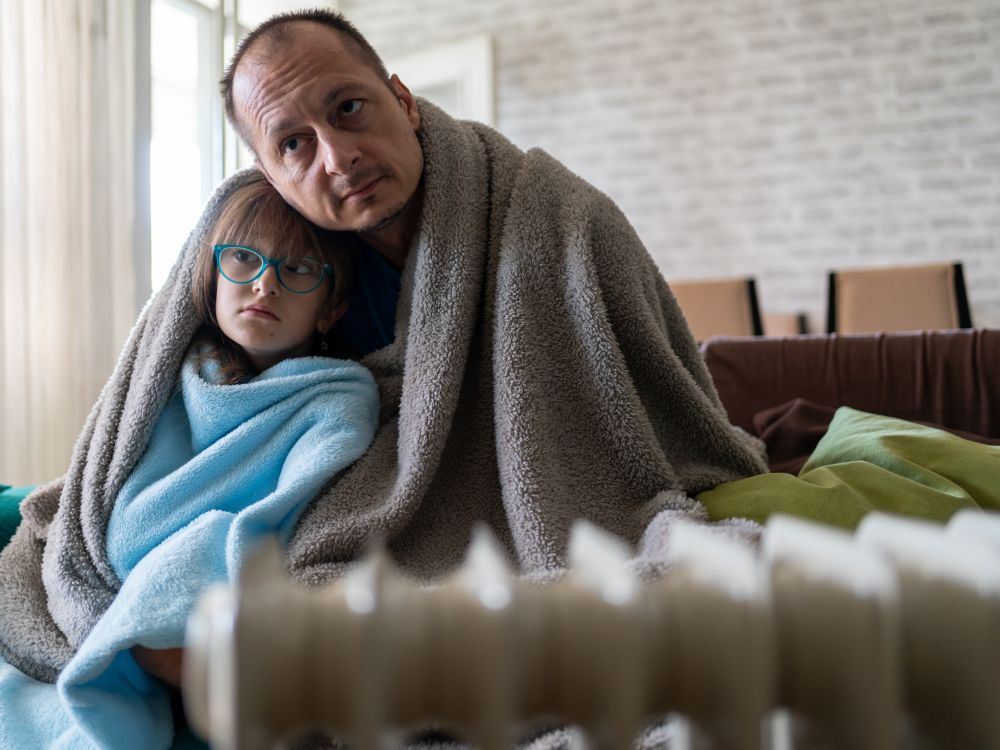
Left out in the cold
Everyone deserves a warm home that doesn’t cost the Earth. But the UK’s cold homes, combined with low wages and high housing costs, are causing a public health crisis and deepening health inequality. Neither the Conservatives nor Labour are taking this issue seriously enough, with both parties backtracking on policies in recent months.
We commissioned Professor Sir Michael Marmot’s Institute of Health Equity to publish a new report, “Left out in the cold: the hidden health costs of Britain’s cold homes.” It examines the latest evidence and most recent findings on the mental and physical health impacts of cold homes.
Read on to learn more about the terrible cost of cold homes, key findings from the report, and what actions we’re calling for to secure warm homes for all. You can also download the report and share it with your networks.
Britain's cold homes
Nicki, aged 50, is a palliative care patient and disabled rights activist who's bedbound due to Ehlers-Danlos Syndrome and pulmonary fibrosis.
"I’m in fuel debt, but when I tried to limit my energy use last winter I got hypothermia twice, so I don’t have any option but to heat my bedroom constantly in the winter.
"There are so many sick and disabled people struggling to survive winters and heatwaves in the UK because of extortionate energy bills and not enough income. The final cost of living payments are being paid this month – I do not know what disabled people will do without them. I have no doubt that some of us will join the thousands who die every year from living in a cold home.”

Professor Ian Sinha is a paediatric lung consultant at Alder Hey Children’s Hospital in Liverpool.
"In our clean air clinic we have spent the winter hearing about children who can see their breath in front of them, and can’t sleep because of how cold their rooms are.
"Babies in cold homes do not spend their calories on developing lung tissue, neural pathways, and other crucial physiological drivers of health – rather, they spend their calories trying not to die of hypothermia and hypoglycaemia."

Poorly insulated homes, stagnating wages, high energy costs and exorbitant housing costs have created a perfect storm of misery and poverty. Marginalised and vulnerable communities are disproportionately impacted, including those with pre-existing health conditions, people of colour, disabled people, older people, young children and those on low incomes.
Read more about the experiences of people living in the coldest homes.

The hidden health costs
This new report has revealed the following:
- The UK has unacceptably high numbers of households living in cold homes. These are both badly insulated and have incomes below the minimum required for an acceptable standard of living.
- People struggling with rising energy costs are most likely to suffer from increased health risks.
- Cold homes are associated with mental health conditions and social isolation. They double the risk of adults developing new mental health conditions and triple the risk of exacerbating existing conditions.
- Cold homes are also associated with physical health issues like heart attacks, respiratory problems and impaired lung and brain development in children.
- The crisis is costing society tens of billions each year through ill health, increased bills, lost productivity and carbon emissions.
- For example, it’s estimated that 1.7 million school days are missed across Europe each year due to illnesses associated with damp and mould, and UK rates are 80% higher than the EU average.

We must secure warm homes for all
It’s clear that urgent action is needed. But installation rates of energy saving measures and insulation have plummeted by 90% since 2013. And both the Conservatives and Labour have recently backtracked on promises around warm homes.
It makes moral and economic sense to bring forward the investment needed to insulate homes and reach net zero targets. “Left out in the cold” calls for a range of actions, including:
- A 10-year, £60+ billion national insulation programme.
- Tougher energy efficiency standards for private-rented sector homes, accompanied by fiscal incentives to ensure these don’t lead to higher rents.
- Higher wages and benefits for those on low incomes.
- The building of more social homes.
These measures would bring down bills, keep homes warmer, strengthen the economy and slash emissions.
The actions we recommend in this report are important steps to creating a fairer more sustainable society with greater health equity and protection of our environment. Government and prospective governments, please take note.
Professor Sir Michael Marmot, Institute of Health Equity

Download the report



